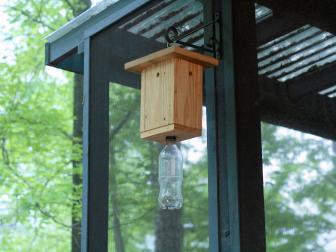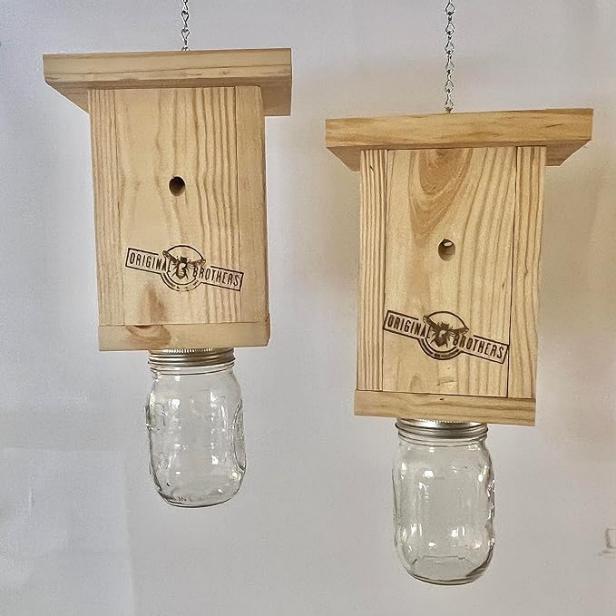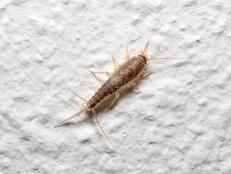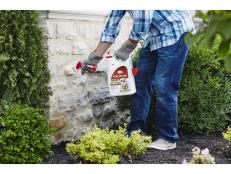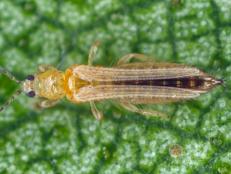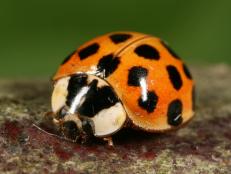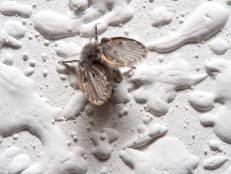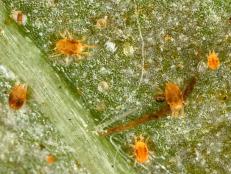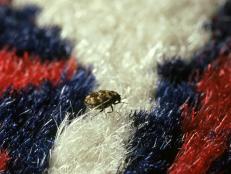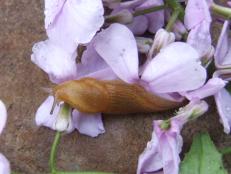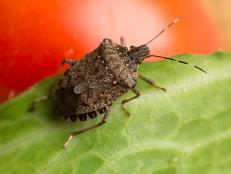How to Get Rid of Carpenter Bees
These big bees chew holes in your fence, deck and outbuildlings, but they're pollinators. Here's how to manage carpenter bees, along with some reasons why you should consider co-existing with them.
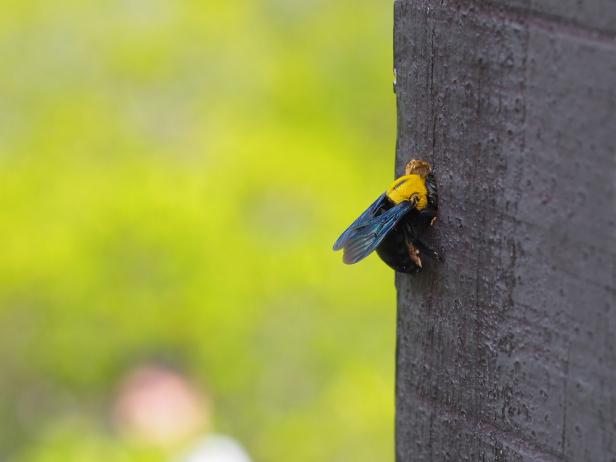
Shutterstock/FIFTYONE by Athi
Femaie carpenter bees chew holes in wood so they can lay their eggs. Carpenter bees have a smooth and shiny abdomen, unlike their fuzzy-bodied bumblebee cousins.

We can all agree that we don't like the holes that carpenter bees bore into our pergolas, patios, potting benches, fences and outdoor buildings. When those great big bees show up in the spring, we're reminded how they got their name. The females get to work chewing holes into trees and wooden structures so they can lay their eggs. Carpenter bees make holes so fast, you'd think they were flying around with a tiny power drill.
I have to get rid of the carpenter bees, you think. Not so fast.
Before you come up with a plan on how to get rid of carpenter bees with pesticides or even earth-friendly bee traps, remember that these gentle giants are pollinators. Their visits to eggplants, tomatoes, blueberries and a slew of other vegetables and flowers help these plants produce crops we value. Carpenter bees often work with honey bees to pollinate, so these wood-chewing insects are a force for good.
On top of that, carpenter bees don't sting you. They're docile creatures, says Dr. Keith Delaplane, director of the Honey Bee Program at the University of Georgia. And compared to say, termites, they don't do a ton of damage to structures, Delaplane says. Your porch isn't likely to collapse from carpenter bee damage. This is because carpenter bees reproduce at such a slow rate that you won't get a catastrophic swarm of them. While a termite queen can live for 20 years, a carpenter bee lives for a couple of years, tops.
"All told, I kinda like the goofy guys and enjoy watching their territorial capering in spring," Delaplane says.
Instead of trying to get rid of carpenter bees, he says, look for ways to deter them from drilling holes in your wooden structures. Consider learning how to co-exist with these insects without killing them.
How to Keep Carpenter Bees Away
1. Apply a Citrus-Oil Based Spray
Carpenter bees avoid strong smells. Make a DIY spray with essential oils, or buy a commercially prepared product. Carpenter bees don't like cinnamon, spearmint or peppermint, says Dr. Dan Suiter, professor of urban entomology with the College of Agricultural and Environmental Sciences at UGA. Sprays made with those essential oils repel the creatures. The best time to put essential oils on your deck, patio posts or potting bench is in the spring, when female carpenter bees are scouting for a place to make a nest.
2. Plug Carpenter Bee Holes ASAP
Since female carpenter bees drill these tunnels in your deck rail to lay eggs, they're going to put them out of sight, where they're safe from predators and the elements. "Be vigilant. Look (for holes) in places that are going to be protected from rain and probably out of your eyesight," says Dr. Brian Forschler, a professor of entomology at UGA. When you find a carpenter bee hole, stuff a mothball in it and then plug it with foil, wood putty or caulk, Forschler says. "The mothball debilitates the animals that are in there and prevents them from chewing back out of your plugs." You can also stuff a cotton ball soaked in rubbing alcohol into the nest and then seal off the hole. Generations of carpenter bees return to these holes year after year to nest, Suiter says. "They literally go back to where they were born and crawl inside to lay more eggs." If you seal up their ancestral home, the bees may move on to another location.
3. Build With Treated Wood
Yes, carpenter bees can bore through treated wood, but they're less likely to do so if you use wood that has been pressure-treated to resist insects and the elements.
4. Paint Outdoor Structures
Yes, carpenter bees can bore through painted wood, but again, they're less likely to do so. We're looking for deterrents here, not a magic cure.
5. Replace Damaged Wood
Instead of fretting about how to get rid of carpenter bees, replace the wood they have damaged. "You can just learn to tolerate damage and then replace the wood every five years," Forschler says. "Most people aren't going to go along with that, I know," he says. "But I've really been on this kick of coexistence with these animals, given the fact that they've been roaming this earth for 160 million years and our societies have intruded in their world only the last few thousand years," Dr. Forschler says. "They're going to be here way after we're gone."
But you still say you don't want to co-exist with carpenter bees ...
Pollinator, schmollinator, you want these bees gone. That's your choice. Don't reach for pesticide, please.
Eco-friendly Ways to Get Rid of Carpenter Bees
1. Put out carpenter bee traps in the spring and early summer
How to Make a Carpenter Bee Trap
Build a carpenter bee trap that will put an end to the carpenter bees' destructive doings.
Yes, they trap some bees. But there's no hard data showing traps are an effective way to keep carpenter bees from damaging your wood. "We don't know if they trap the right bees," Suiter says. "It may be the males who will explore an exotic hole and get trapped. But it's not the males who do the damage." Cutting down on the male carpenter bee population can keep the females from successfully procreating, so the traps do have some value. Here are step-by-step instruction on making a homemade carpenter bee trap.
2. Hit them with a tennis racket.
This method is like using a giant fly swatter. The bees die quickly, you get an upper arm workout and your inner mean kid gets a jolt of glee when you tee off on a big fat bee.
Here's the bottom line: No one knows how to get rid of carpenter bees. "We don't know a whole lot about carpenter bee control," Suiter says. "There is no data on carpenter bee management. Everything is anecdotal. There is no silver bullet."






